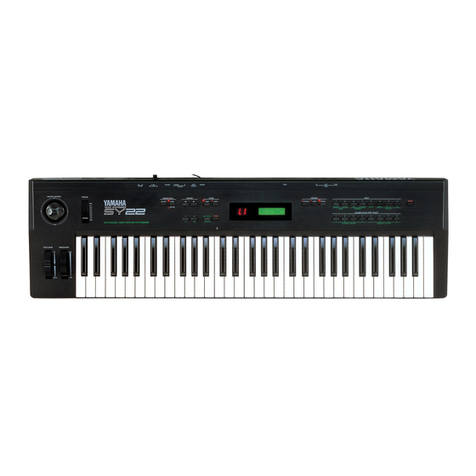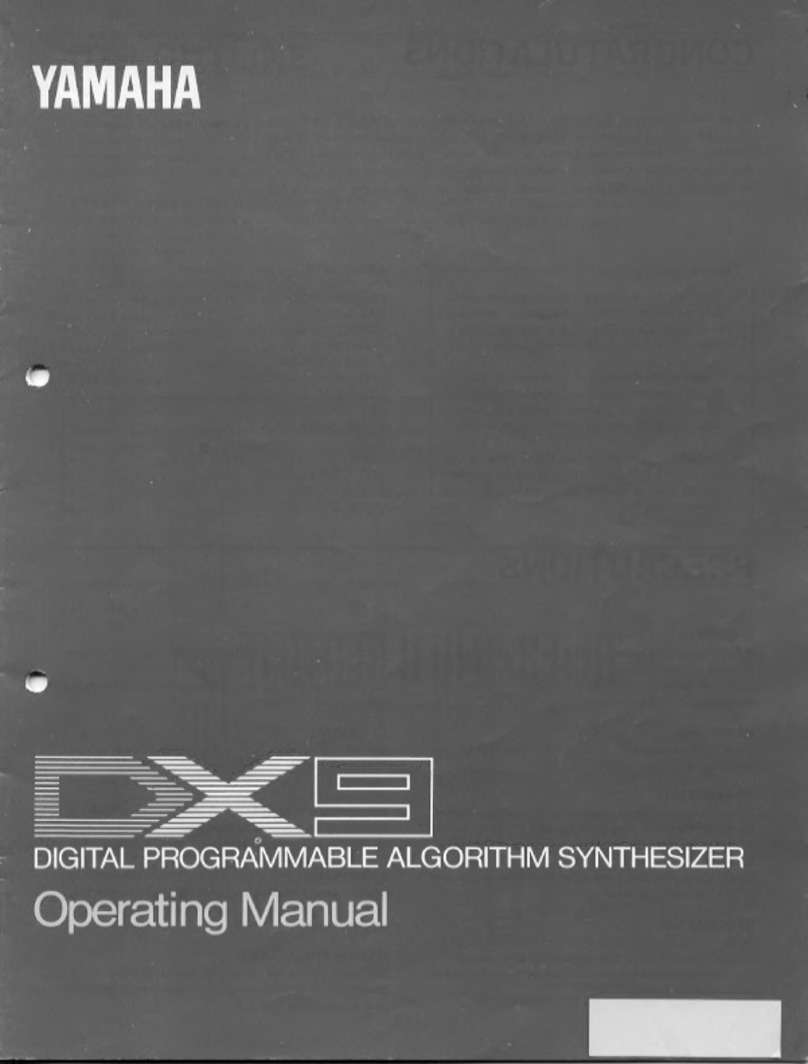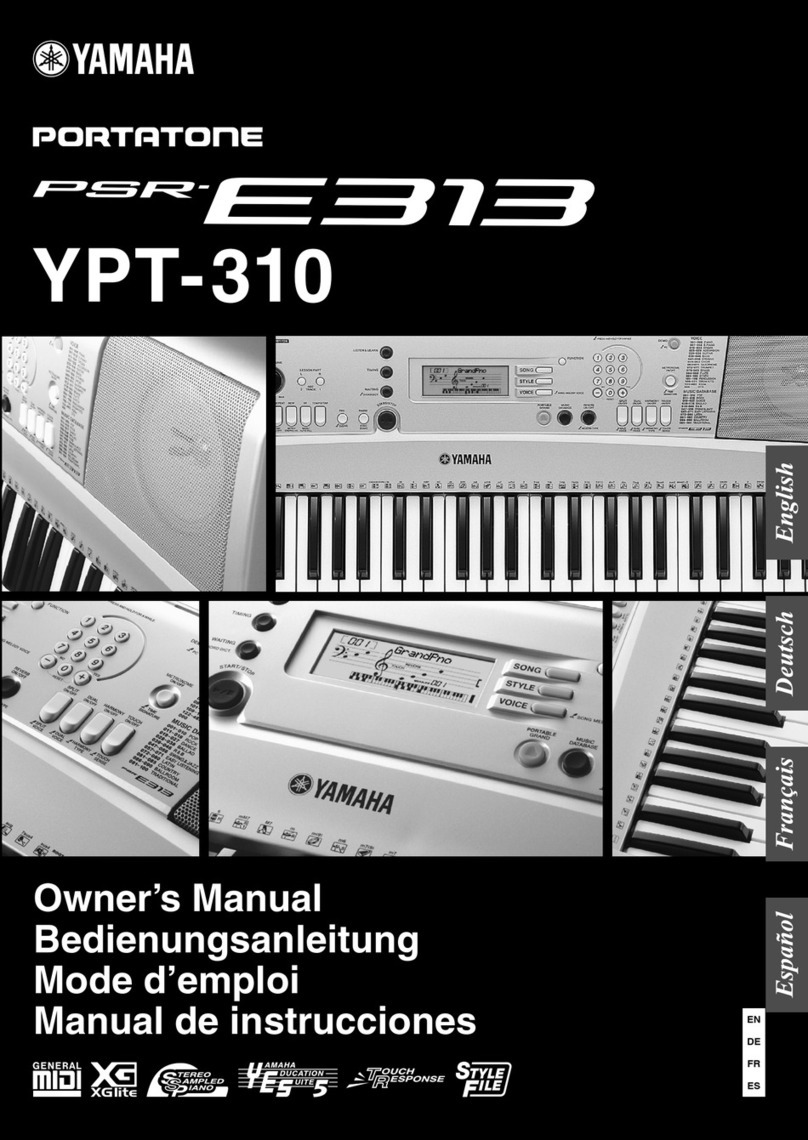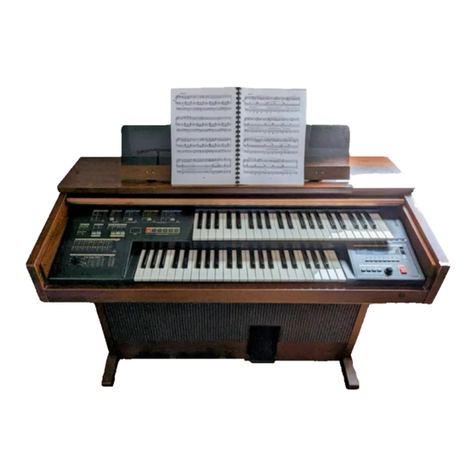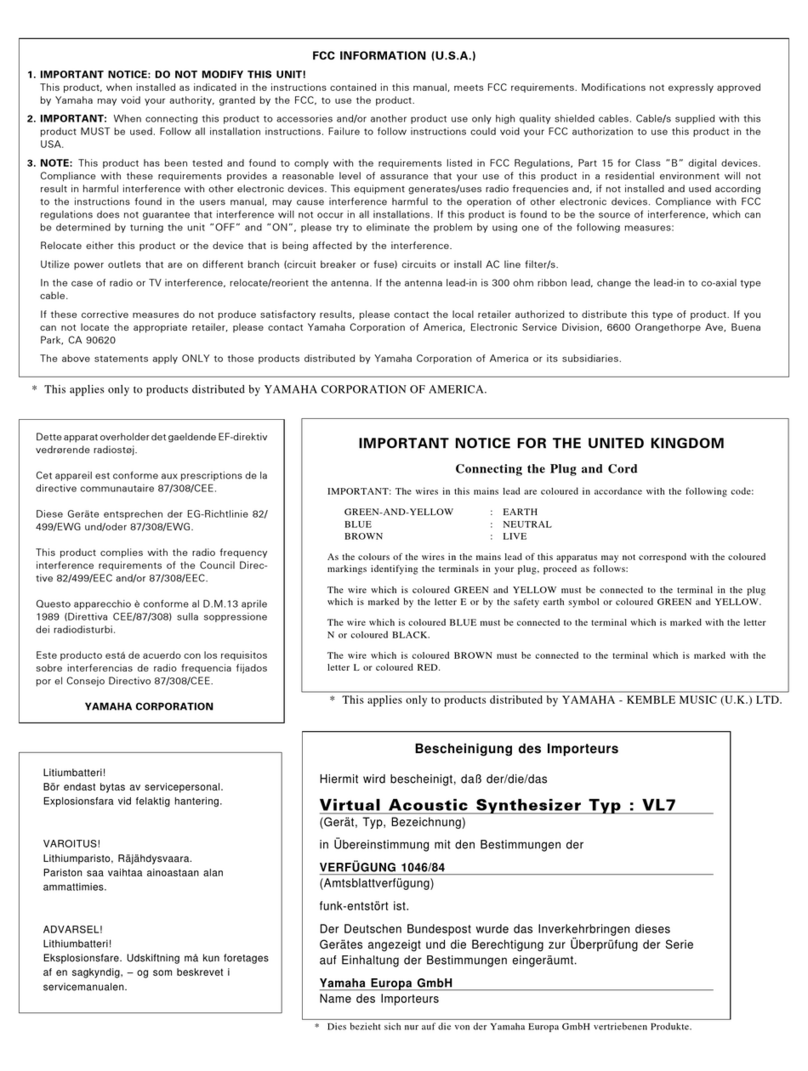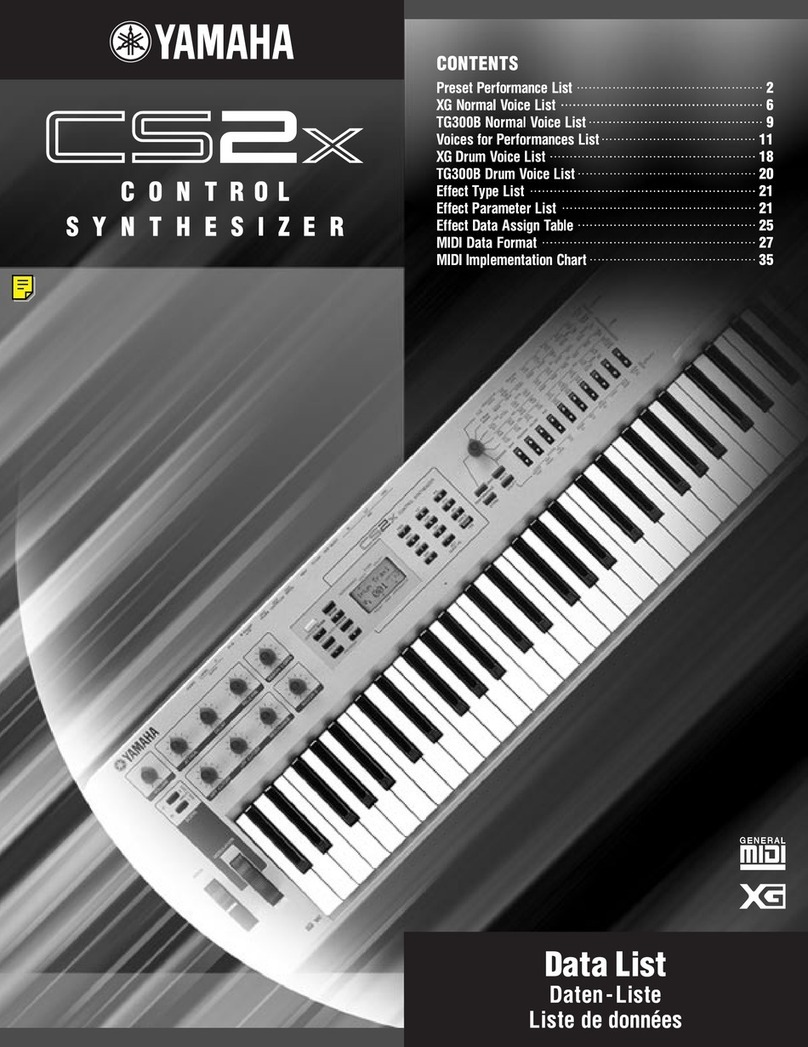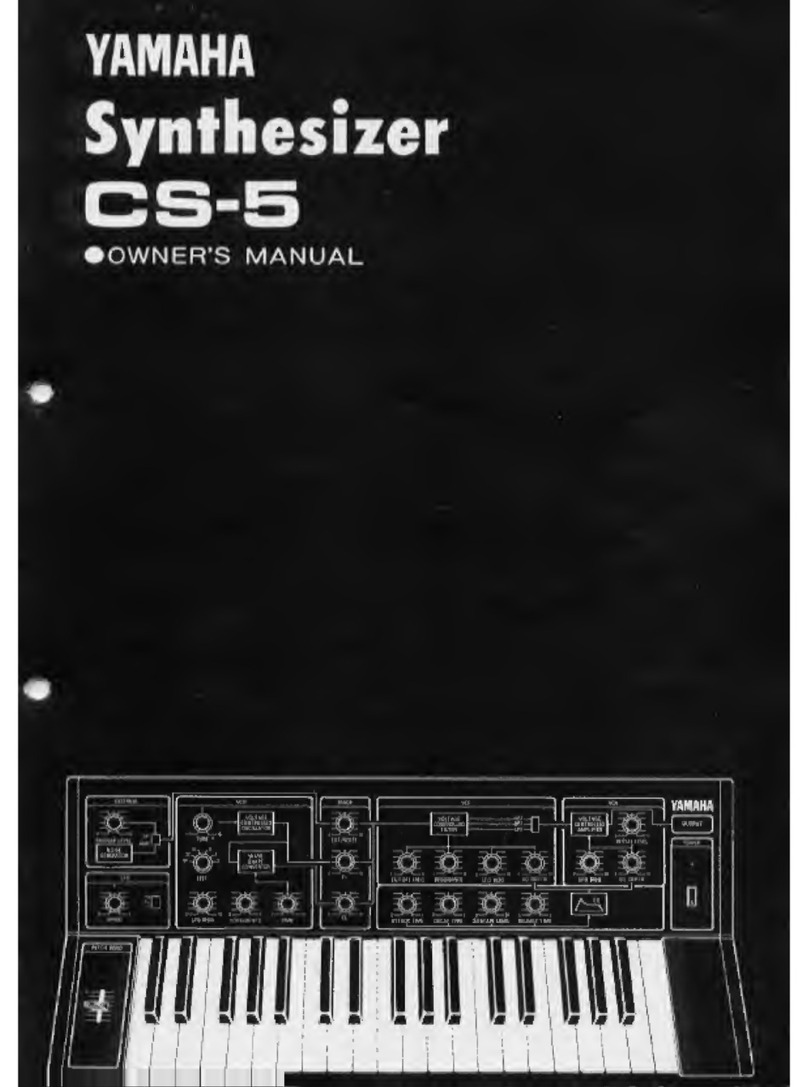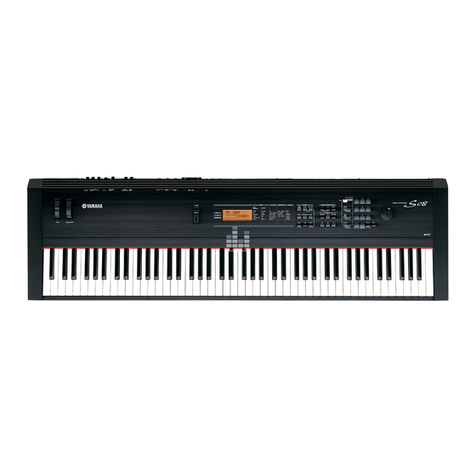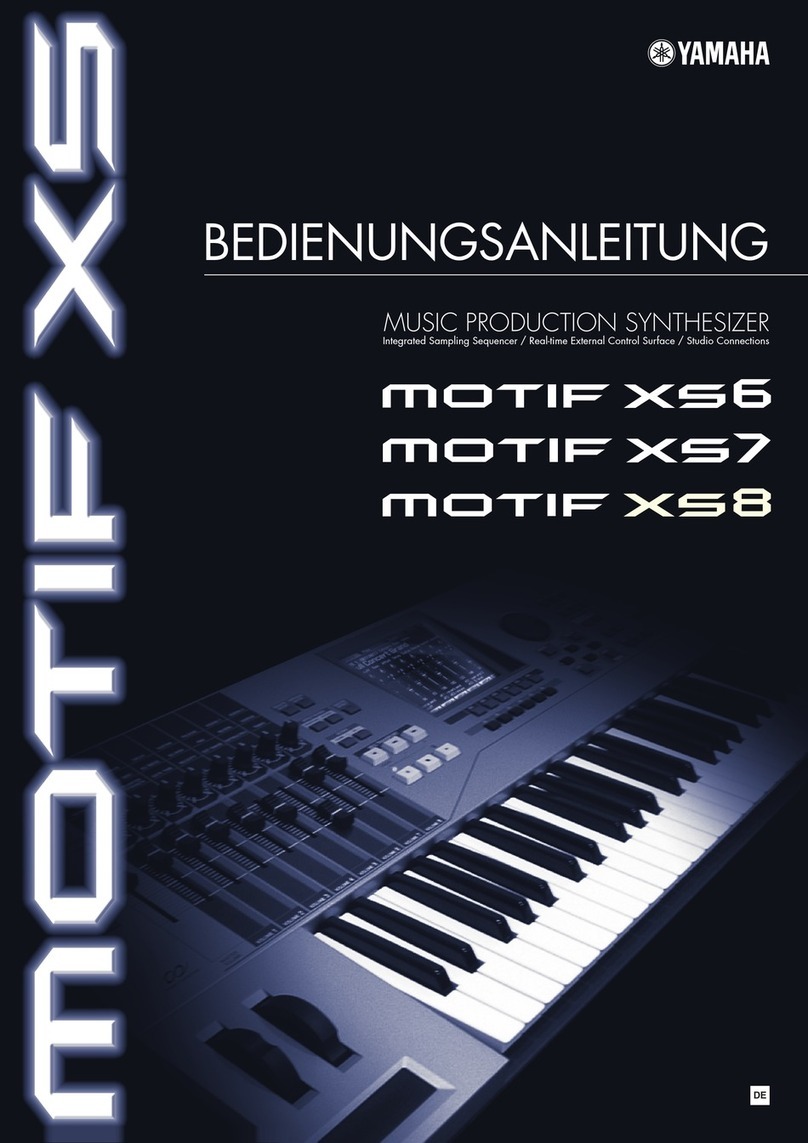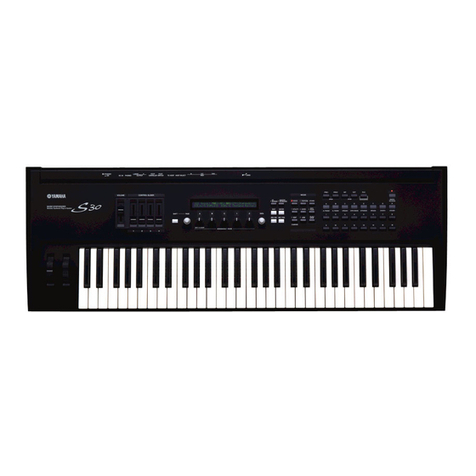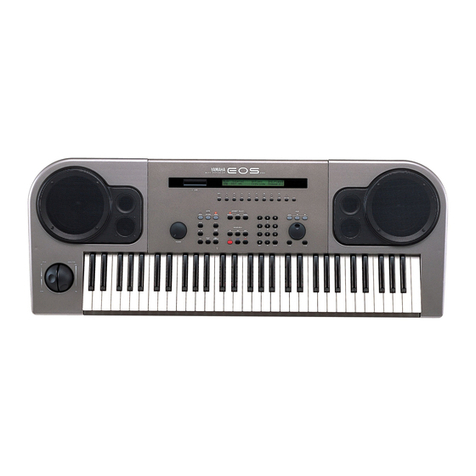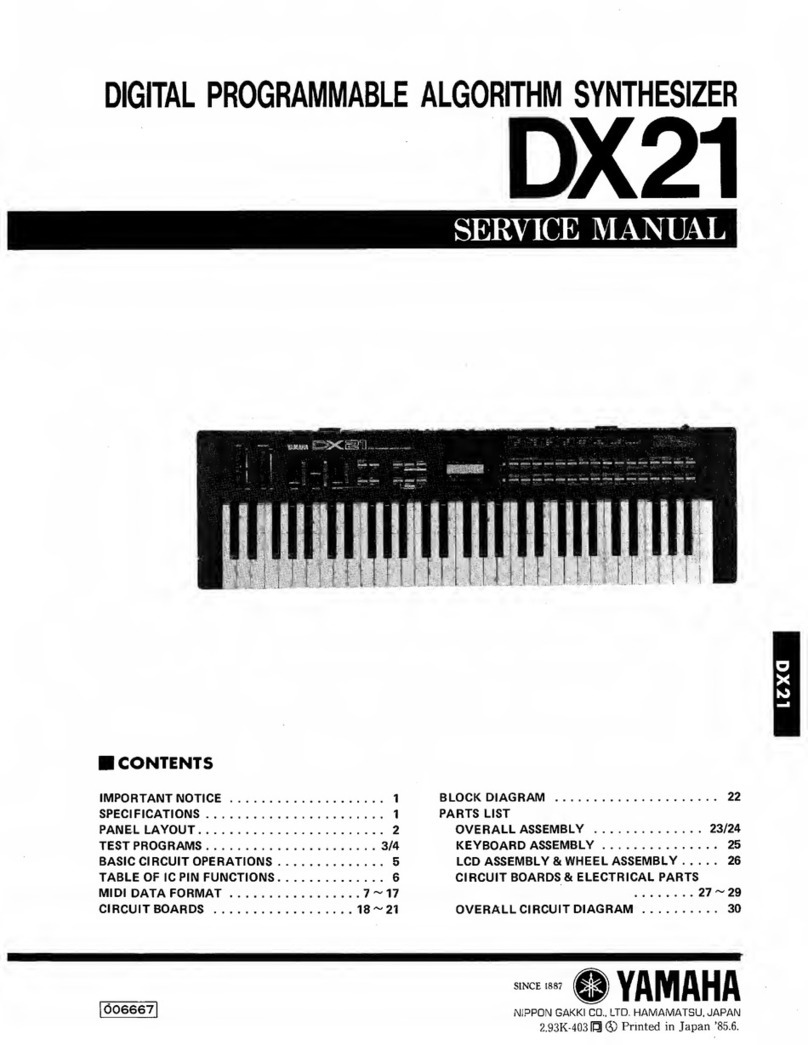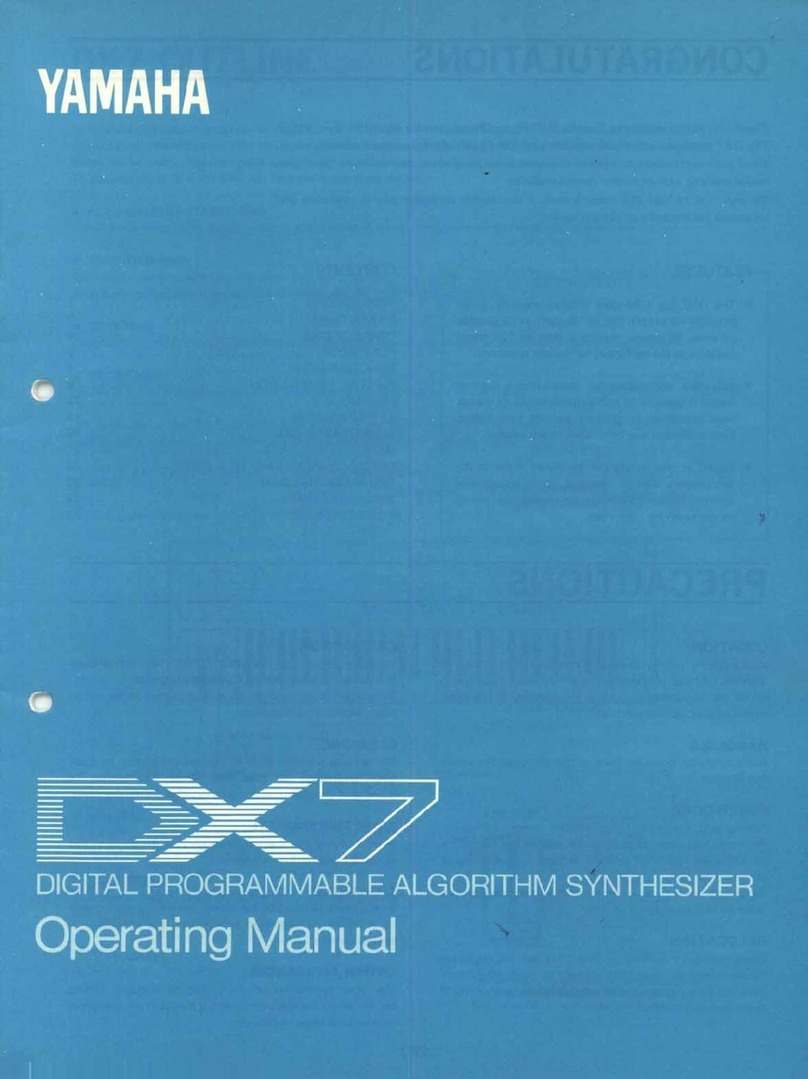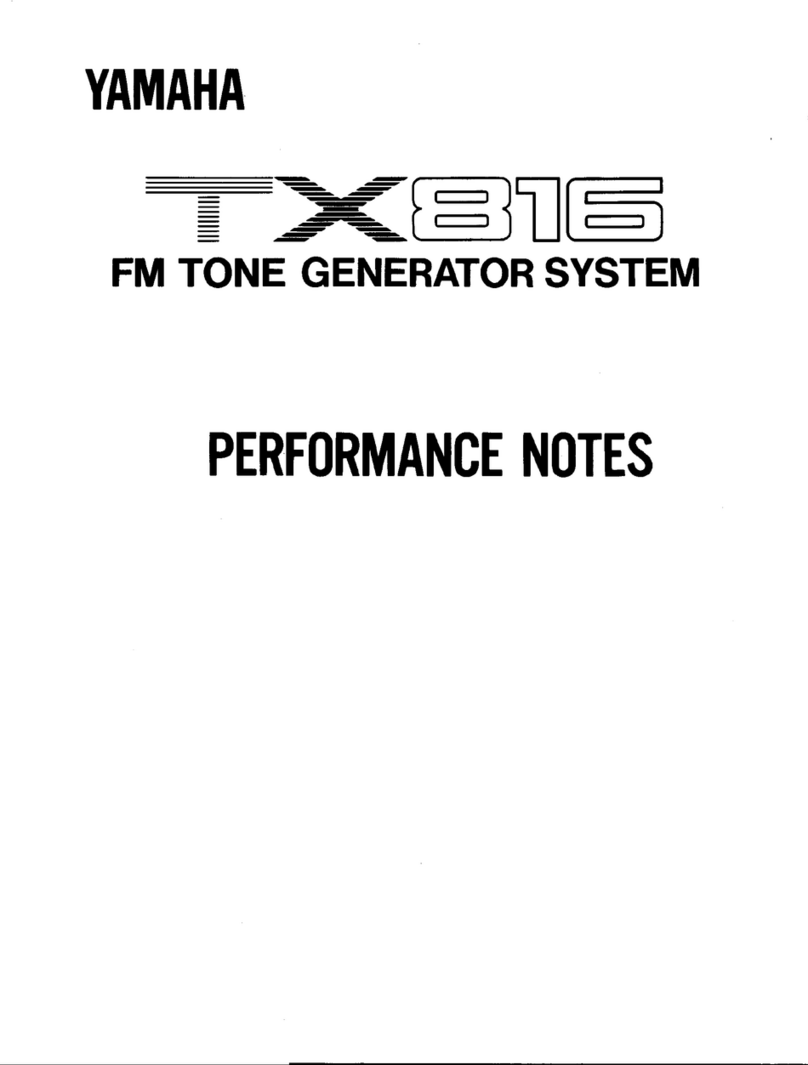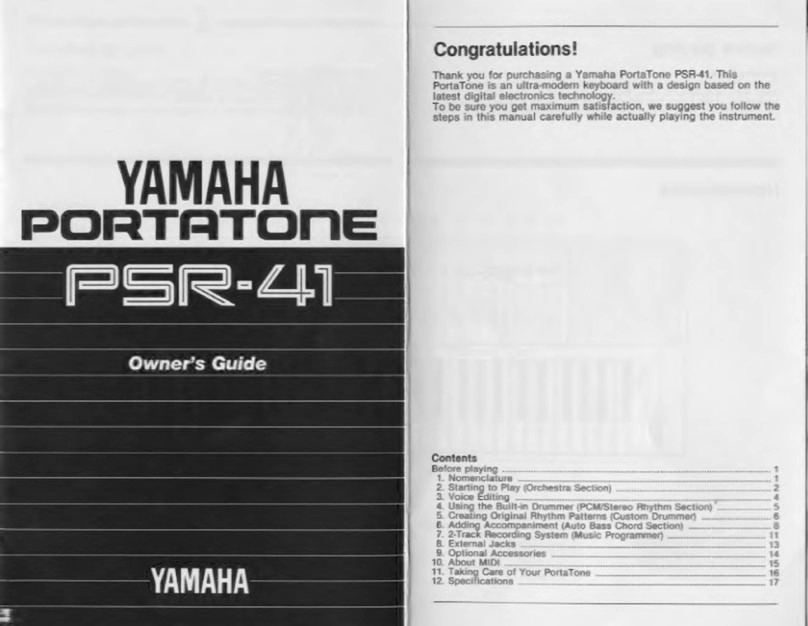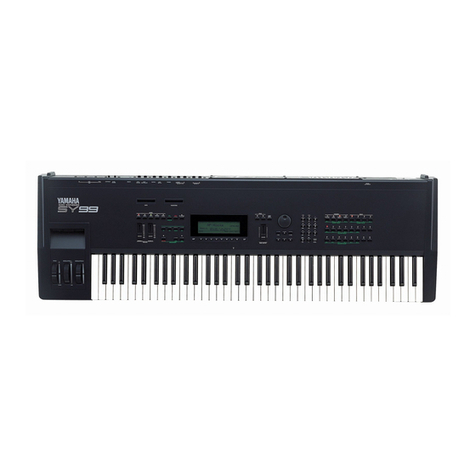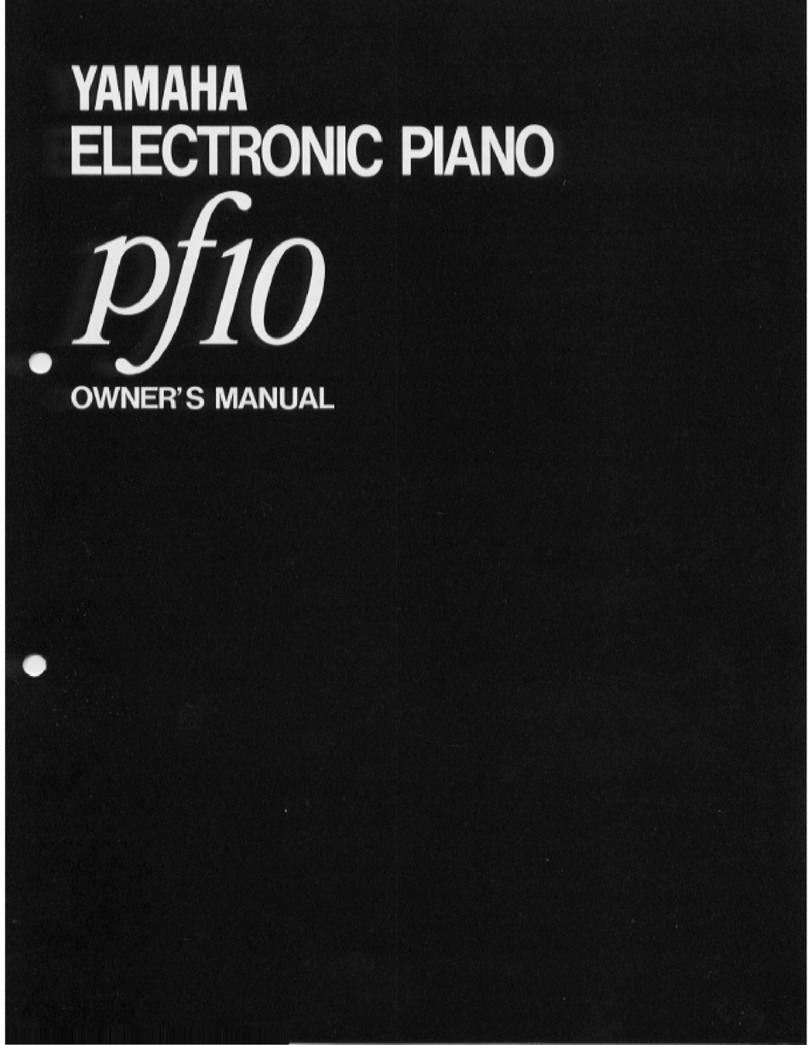
CS60(S/# 1001- )
KEY CODER &KEY ASSIGNER LSI (YM26600) DA CONVERTER LSI (YM26700)
The LSI detects what keys are held down by judging the
pulse combination of the octave and note.
It also generates the seven bit key code, which is processed
by time sharing, in accordance with the key held down.
Pin. Pin
No. Name
VSS +8. 5V Power Supply
(p Master Clock Input
SC~ Synchro-clock Output
SC8 Synchro-clock Output on the first channel.
1.
2.
3.
4.
*jirinnjuuiJ¥uuuiiin-Mis KHZ
_1 29(1)
scfl TL_ _TL1/^
1Apulse is generated on the timing ofS
SCSflthe first channel. .,„ _
—'
''0-1 /8 SC
IC Initial Clear Input
Power SW ON
1
o[<-2±1 sec |J
On this timing, C4TTcode is memoried.
6. VDD —6.5V Power Supply Input
7.
8.
19.
20.
24.
25.
C#l Note on data input
When the key is depressed, the pulse is
supplied the corresponding pin of the note.
|*-H0.2mS
_TlMJl-JUn8'
-6.5
nKEY-ON
Octave on data input OFF
V5'
N1
When the key is depressed, the pulse is
supplied to the corresponding pin of the octave.
JlfUUl-JUE+8.5
-6.5
28. N4
KEY-ON
Note code data output
OFF
1:-6.5V 0: +8.5
V
C# DD# EFF# GG# AA# BC
N1 11111111
N2 1111111 1
N3 111111
N4 111111
29.
31.
B1
B3
Octave Code Data Output
1: -6.5V 0:+8.5V
C2 C2#-'C3 C3#~C4 C4#~C5 C5#~C6
B1 11
B2 111
B3 1 1 1
32.
39.
K01-1
)L.„. Key on
K08/ Data Output
OFF
KEY-ON
+8.5 (0)
-6.5V (1)
The time shared key data is supplied to the LSI. Analog
DC voltage is produced in corporation with key by the data
and supplied to each channel.
VSS +8. 5V Power Supply
SC8 Synchro-clock input on the first channel.
POR Portamento and Glissando operation. When
the portament VR is turned on, +8.5V is
supplied to the pin and actuate.
PC Clock input for Portament and Glissando
operation.
U1 .4sec.~1 .4msec.»|
_r
—
ljr
—J ''L— -6.5V
The frequency is variable by Changing the
portamento VR.
N1
11. B3
Note code data input
Note code data is supplied to the pins from
key coder LSI.
.Octave code data input
Octave code data is supplied to the pins
from key coder LSI.
12. OO Output for octave key voltage. (8ch time
sharing)
Provided the output key voltage for the
octave selected from octave code.
13. OCT0\ Input for octave key voltage.
18. OCT5'
*TU pin: 4.0V
OCT0 OCT1 OCT2 OCT3 OCT4 OCT5
Voltage 0.25V 0.5V 1.0V 2.0V 4.0V 4.0V
19. C#
I
30. C
The voltage of TU line is divided by the
ladder composed resistors and supplied to
each pin constantly.
Input for note key voltage
OO pin: 4.0V
C# DD# EFF#
Voltage 2.119 2.245 2.378 2.520 2.670 2.828
GG# AA# BC
Voltage 2.997 3.175 3.364 3.564 3.775 4.0V
31.
38.
39.
40.
CH81
cm'
VDD
....
The voltage of OO line is divided by the
ladder composed resistors and supplied to
each pin constantly.
Key voltage output
The output of voltage determined by each
key is provided in accordance with the
channel key code.
—6.5V Power Supply, Input
Master Clock Input f=94±5KHz
The number of note sounded is variable byusingthis pin.
i.e.) Up to 4notes: Supply -6.5V to KQ5.
Up to 3notes: Supply -6.5V to K04.
40. Mode .... Switching output for sound model
For 8notes .... Supply -6.5V (1)
For 7notes .... Supply +8.5V (0)
